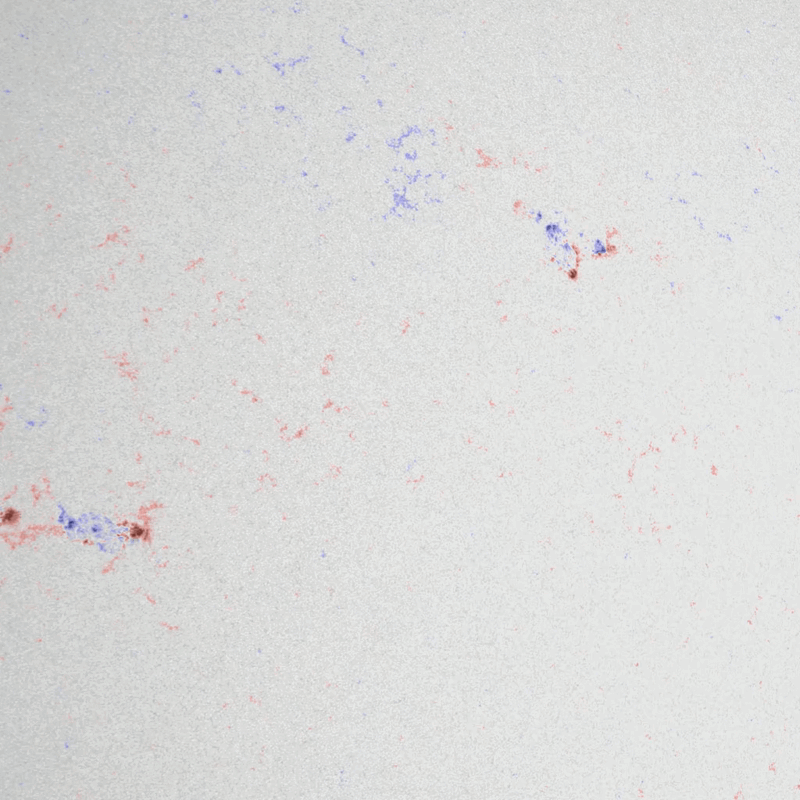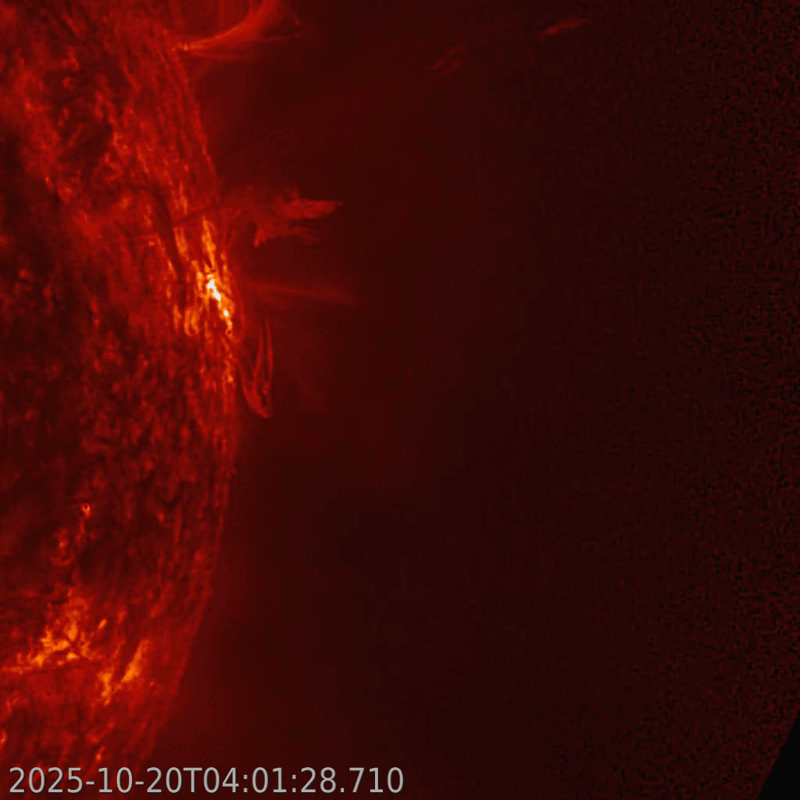NOAA 4246 (SIDC active region 639) started to develop on 10 October into a large and complex active region. According to the SIDC space weather (SWx) forecaster (sunspot chain), this sunspot region reached the most complex classification both in white light (McIntosh ; Fkc) as in magnetograms (Mount Wilson ; Beta-Gamma-Delta). Both classifications are explained on the STCE SWx Classification page. The annotated SDO images underneath show the evolution of NOAA 4246, i.e. the sunspot group in the upper right corner, in white light (left) and in magnetograms (right) with red indicating the positive polarity (magnetic field lines coming out of the solar surface) and blue the negative polarity (magnetic field lines returning into the solar surface). The image on the right actually has the magnetogram overlaid on the white light image, to highlight the correspondence between sunspots and their magnetic polarity. The clips cover the period from 11 till 15 October at a cadence of 1 image per hour (annotated still from 15 October at 04:00UTC). For the 13-15 October period, there are are also zooms available for both NOAA 4246 and 4248.
 |
 |
NOAA 4246 was the source of 27 M-class flares which it produced during its transit over the solar disk from 10 to 18 October, and while it was already a day behind the solar limb on 19 October. No X-class flares were recorded from this active region. This group now ranks number 6 in the list of most M-class (or stronger) producing active regions so far this solar cycle 25. The clip underneath combines extreme ultraviolet (EUV) pictures by SDO (AIA 131) with white light images (SDO/HMI) and shows the two strongest flares that NOAA 4246 produced: an M4.8 at 04:15UTC on 15 October and an M3.7 at 07:18UTC just a few hours later. The blooming and diffraction patterns that can be seen in the imagery are instrumental (more information is in Note 1 of this STCE newsitem). Some of the flares produced by NOAA 4246 during the period of 13-15 October were associated with coronal mass ejections (CMEs) that had an earth-directed component. These CMEs would eventually reach the earth environment causing minor to moderate geomagnetic storming on 18 and early 19 October.

The sunspot region in the lower left corner of the white light images and magnetograms is NOAA 4248 (SIDC AR 621). Though large, it had magnetically a much simpler configuration than NOAA 4246. The region produced only 2 M-class flares, an M2 on 14 October and an M1 early on 20 October when the region was near the west limb. The EUV imagery underneath is from GOES/SUVI 304 and shows the spectacular eruption at relatively cool temperatures of 80.000 degrees.






